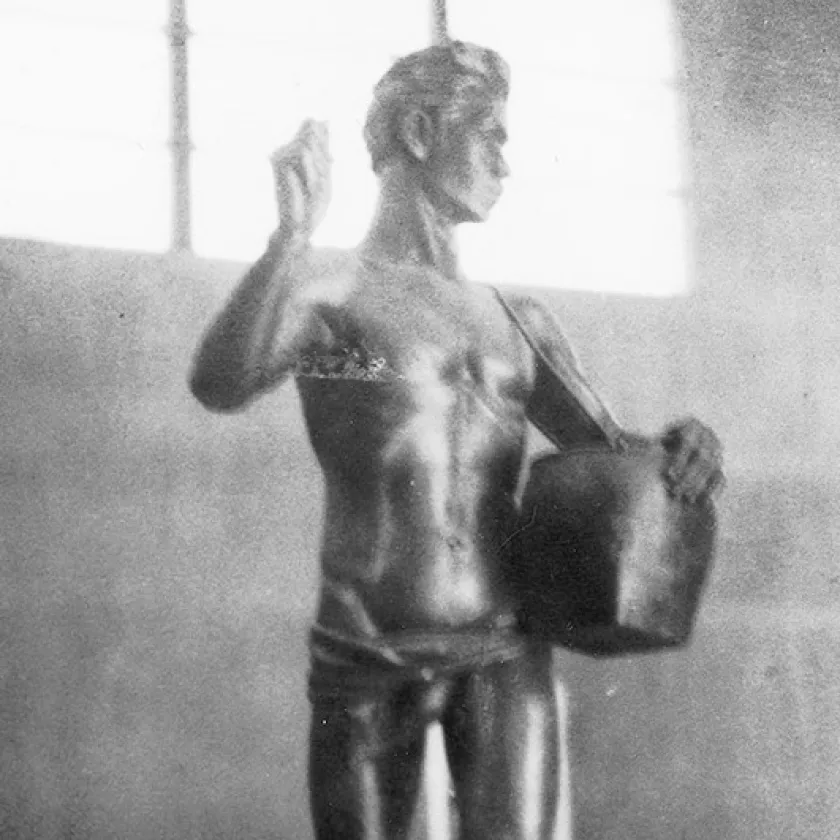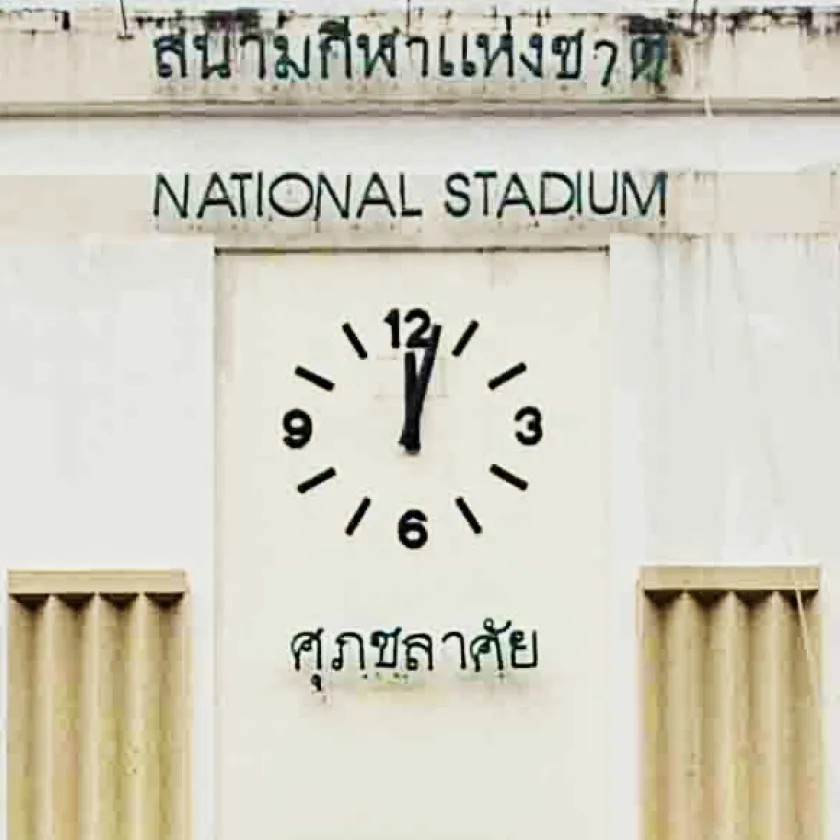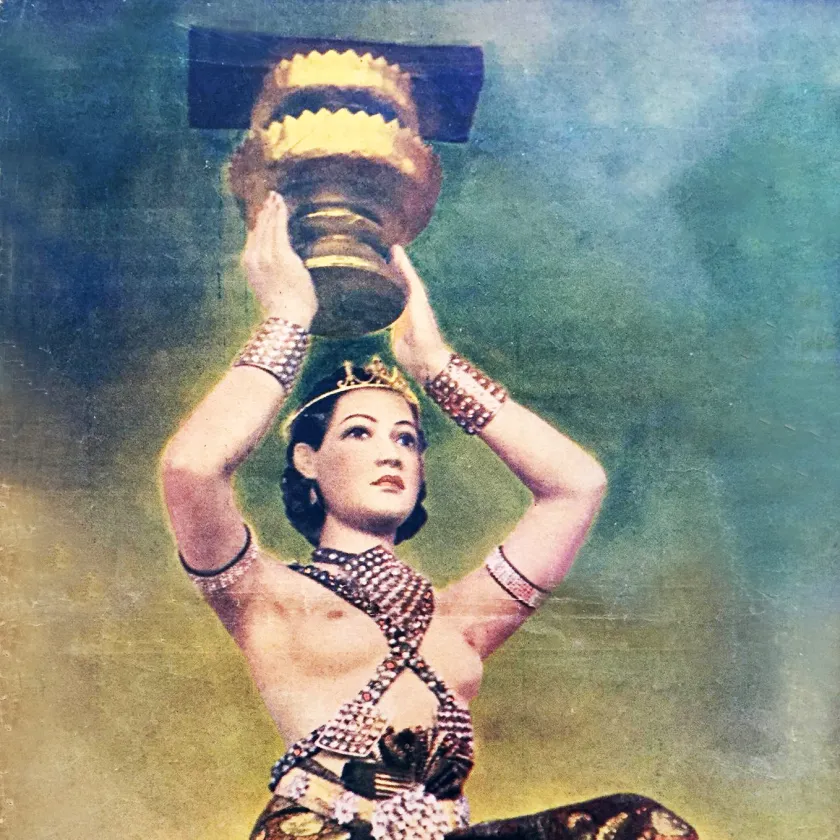Apart from instilling democratic values through public relations and symbols in architectural structures following the 1932 revolution, art was another political tool used by the People's Party to disseminate the "Six Principles" to the public. As a result, art during the People's Party era is considered inseparable from political art. One of the significant turning points was the re-establishment of the Fine Arts Department (after it was dissolved during the reign of King Rama VII) to serve as a crucial agency in supporting political policies through art. Luang Wichitwathakan was appointed as the Director-General of the Fine Arts Department, along with the most influential art craftsman, Silpa Bhirasri, who would later be honored as the "Father of Modern Thai Art." Among the various branches of art that the People's Party utilized to spread their ideology, nude male sculptures with pronounced muscles seemed to be the most frequently used form. This type of art could clearly reflect the ideal physique of the people according to the new norms.
The presentation of a perfect physique not only promotes citizens' good health but also represents the People's Party's effort to dismantle the old societal perception that those who work hard are "cursed" (while those who live comfortably without doing anything are "blessed"). It also goes against traditionalist values derived from classical literature where protagonists often succeed without effort, deriding the old establishment's ideal to be a kind of "farming on others' backs," that is, exploitation of commoners. It can be said that these muscular sculptures instill in citizens the values of diligence, a love for work, and an appreciation for hard work as a cog in the nation-building machine. This is evident in the "Economy Principle Statue," a realistic sculpture of a robust farmer, representing the ideal citizen according to one of the six principles of the People's Party (the third principle: to promote the people's economic well-being, the new government will provide jobs for everyone and will outline a national economic plan to prevent poverty). This statue was first exhibited at the Constitution Celebration in the late 1930s, one of the annual events where the People's Party clearly used art to instill democracy. This included the presentation of modern architectural pavilions, sculptures, and booth designs, the Miss Siam pageant (presenting women's ideal physique and social roles), and art and drama competitions.
Even though there is currently no evidence regarding the fate of the Statue of the Economy Principle, its prototype, which is a plaster sculpture, is preserved in the Prototype Sculpture Hall on Na Phra Lan Road (next to Silpakorn University). It is kept alongside prototype sculptures of the monuments of King Rama I, King Naresuan, King Taksin, and Thao Suranari, among others. It can be said that this sculpture is one of the first tangible symbols of the People's Party that contributed to embedding the idea that every citizen is a cog in driving and developing the nation's economy, just like the mindset of many civilized countries.



